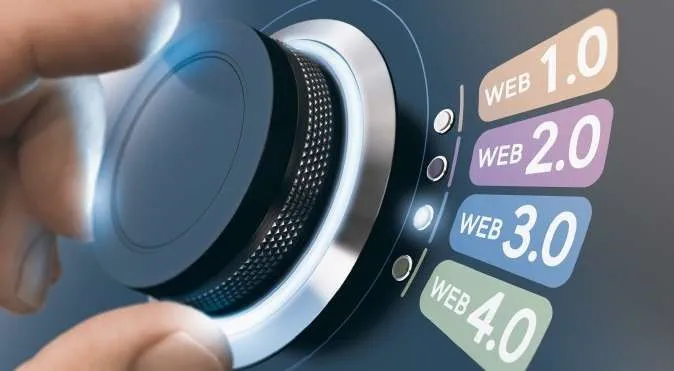
Tech-enabled Hostels
17 सितम्बर 2020

In the current era of technological advancements where there is an app for almost everything, hostel management appears to lag behind in adopting a new innovation. From redundant paperwork to time-consuming manual processes, most of the hostels are still following archaic methods to manage their day to day activities. These old school methods of functioning results in ineffective communication between hostels, its students and parents.
Some of the hostels or student housing companies are investing in new-age technologies to differentiate themselves by being markedly different from traditional university-led hostel systems. Such technologies include facial recognition security systems, RFID enabled libraries and canteens, attendance systems that both students and parents can access on their smartphones.
Even though student housing as a market is currently dominated by university-led facilities, it will potentially see a substantial growth with private companies entering the space to plug demand gaps. Real estate consultancy firm JLL estimates the space is expected to see a 38% CAGR amounting to Rs 2,400 crore by 2020.
Most companies in the space, like OxfordCaps, Stanza Living and Placio have standardised their attendance systems with a professional escalation matrix. They also offer biometric security systems where entry and exit times are recorded. Hostels can set a threshold time, based on which if the student is not in within a certain time, parents get a notification. OxfordCaps is leveraging IoT-connected devices to monitor energy and space consumption, specifically in gyms, reading lounges and TV rooms, where usage usually remains untracked.
Considering industry average of around 40% for food wastage in hostels in urban centres, various organisations like Stanza Living are using advance analytics to reduce operational costs. With the ability to predict and analyse consumption data, food wastage at Stanza properties have been reduced to less than 10%.
On the other hand, Placio brings social incentive that is used by ride hailing firms such as Uber and Ola to hostels. It digitally tracks various parameters like student behaviour, general cleanliness, punctuality etc. to reward the better ranked students with online gift vouchers.
With majority of the students staying at hostels to complete their education, such tech-based offerings not only improve the quality of life but also help them get exposed to advanced technologies like facial recognition, digital gift vouchers etc.
Popular Articles
Related Articles










-
Disclaimer
The contents of this article/infographic/picture/video are meant solely for information purposes and do not necessarily reflect the views of Bank of Baroda. The contents are generic in nature and for informational purposes only. It is not a substitute for specific advice in your own circumstances. Bank of Baroda and/ or its Affiliates and its subsidiaries make no representation as to the accuracy; completeness or reliability of any information contained herein or otherwise provided and hereby disclaim any liability with regard to the same. The information is subject to updation, completion, revision, verification and amendment and the same may change materially. The information is not intended for distribution or use by any person in any jurisdiction where such distribution or use would be contrary to law or regulation or would subject Bank of Baroda or its affiliates to any licensing or registration requirements. Bank of Baroda shall not be responsible for any direct/indirect loss or liability incurred by the reader for taking any financial decisions based on the contents and information mentioned. Please consult your financial advisor before making any financial decision.
Sweat Powered Watches
Dear Reader,
You have probably heard of solar powered smart watches but what about a sweat powered watch? When people talk about renewable power, sweat isn't exactly something that springs to mind, but it sounds like that this natural process is actually capable of powering fitness trackers and maybe even smart watches too. It sounds pretty crazy but scientists have figured out a way sweat could be used to replace traditional batteries.
The research was done at the University of Glasgow where scientists created a battery cell that has a new type of flexible super capacitor that can be used to replace electrolytes typically found in batteries.
The tech works by collecting the sweat a person naturally produces. This is done by “coating polyester cellulose cloth in a thin layer of a special polymer”. The absorbency of the material attracts perspiration. The ions in the sweat react with the polymer which results in a reaction that generates electricity. Researchers say the battery can be charged with only 20 micro litres of sweat. It’s also very sturdy and can survive several thousand flexes and bends it might encounter – ideal for a wearable strapped to your wrist.
So not only would sweat be a non-invasive way to check on your body's health, it would likely be a highly accurate way too, in the realm of blood in some areas – which is far more appealing than something like heart rate, which has a comparatively limited scope.
The University of Pennsylvania has combined those ideas with graphene, a material considered to be "the best sensor material in existence", to create the SweatSmart by GraphWear. Graphene would essentially allow the sweat sensor to be four times more accurate than current sensors.
Then there are companies like LVL and Halo Wearables, who are aiming a little lower with their sweat-based trackers. The company has spent the past six years working on the Halo Edge, a device that analyses your sweat to indicate hydration levels.
In the same neighbourhood is Kenzen, a company which produces the Kenzen patch, which continually tracks biosensors in your sweat and sends you real-time alerts about your health.
The tech seems promising although it is still in the research phase. But the team is planning to take forward the research on integrating sweat power into wearable devices. After all, they are the perfect option for such technology as you typically wear them while exercising. However, the best hope perhaps lies with LVL and Halo Wearables. There's a chance that bigger companies like Samsung, Apple and Fitbit will explore sweat-based wearables, but that doesn't seem to be on the horizon just yet. So it might be down to the start-ups to make the first breakthrough and hope the major wearable tech heavyweights follow.
Credits : Akhil Handa,Clint James
Technology for a Greener tomorrow
Dear Reader,
Climate change is real and it is happening. Observable effects are seen everywhere- glaciers have shrunk, ice on rivers and lakes is breaking up earlier, plant and animal ranges have shifted and trees are flowering sooner. A 2°C increase could mean more heat waves, a ten-fold increase in Arctic ice-free summers and a complete wipe-out of the world's coral reefs, home to millions of species. More frequent and intense drought, storms, heat waves, rising sea levels, melting glaciers and warming oceans can directly harm animals, destroy the places they live, and wreak havoc on communities and people's livelihoods.
As per NASA, the planet's average surface temperature has risen by about 0.9oC since the late 19th century, a change driven largely by increased carbon dioxide and other human-made emissions into the atmosphere. Companies realize the gravity of the situation and know that the time to act is now. Aiding them in this quest is Artificial Intelligence (AI) and other modern technologies like Machine learning.
Google’s UK-based DeepMind laboratory applies its industry-leading knowledge of neural networks and machine learning to apply more efficient data interpretation to energy consumption and energy-grid distributions. These learnings were deployed for efficient energy distributions in wind farms. Prediction models developed there were used in scheduling energy deliveries resulting in a 20% improvement in operational efficiency.
Climate change has led to teething problems for the global poor and poverty stricken populations leading to poor living environments and onset of diseases and other related ills. AP-Latam, a project run by Argentina-based Dymaxion Labs, uses AI to analyze high-resolution satellite imagery to detect areas of informal settlement growth in precarious areas that are logistically difficult to analyze on the ground. By understanding and predicting areas of potential slum growth and population movements, governments can make better decisions on how to help affected families mitigate the effects of climate change.
Transportation accounts for 23% of global greenhouse-gas emissions, leaving plenty of room for positive contributions from AI. DHL and IBM have teamed up to use artificial intelligence to improve DHL’s global logistics operations. By predicting demand, risk, supply-side variations and other variables, DHL is curbing emission by optimizing their process.
Earth is the only planet we have to call home and global warming is causing irreversible damage. Global awareness is creating waves of innovation and optimizations to reduce the global warming footprint of corporations and individuals.
Credits : Akhil Handa,Prithwijit Ghosh


Leave a Comment
Thanks for submitting your details.